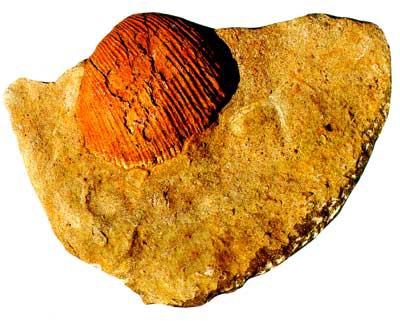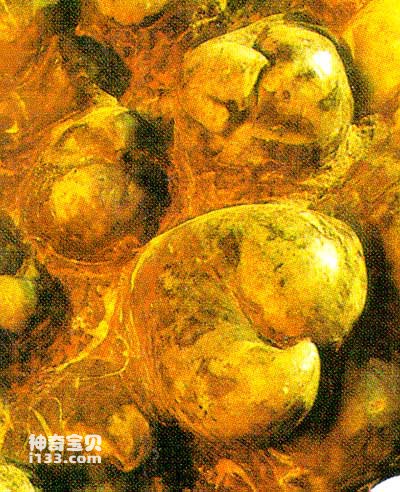Brachiopods are a large group of shelled invertebrates that live on the seabed. Their two-valved shells are of different sizes, and their shells are made of calcium or chitin. Brachiopods spend a few days to two weeks in the larval stage living a planktonic life, and then grow fleshy stems that attach to the seafloor to live a fixed life. However, there are also some species that use secondary cement or shell spines to be fixed to the seafloor or free. Live life lying down.

Long body shell
There are still 7 superfamilies, 84 genera, and nearly 300 species of brachiopods living in modern times, and they were even more prosperous in geological history, from the Cambrian 600 million years ago to the Quaternary 10,000 years ago. There are fossil records. As of 1979, 3,377 genera and more than 32,000 species had been described by scientists. These various brachiopod fossils are of great significance in determining geological time.

Owl-headed shellfish - a pierced shellfish
Scientists divide brachiopods into four classes: unhinged, eoshinated, articulated and brachiopods. Among them, the non-hinged class includes Lingula, Latoconid, Priest and Calvary; the Eo-hinged class includes Triconid and Nisoubian; the articulated class includes Orthomorph and Pentaterium. The order Brachialis includes small-mouthed mussels, perforated mussels, holeless mussels, windowless mussels and stilts.
Modern brachiopods are found in shallow, semi-abyssal and deep-sea environments, and are best suited to life in oceans with normal salinity. Apart from lingual oysters, other brachiopods are rarely found in desalinated seas. For example, the absence of brachiopods in the Baltic Sea and other northern European seas is due to low salinity. Modern brachiopods are distributed on sandy seafloor, rocky seafloor and clayey muddy seafloor. Among them, burrowing tongue-shaped shellfish prefer sandy sea bottoms, while sessile brachiopods prefer rocky sea bottoms or sea bottoms containing gravel and broken shells. Modern brachiopods also often live in symbiotic relationships with algae, corals, worms, molluscs, and echinoderms.

Shi Yan
Fossil brachiopods are found in all kinds of sedimentary rocks, but they appear more frequently in limestone, marl, shale and siltstone, and are also better preserved. Brachiopod fossils from the Paleozoic era often appear in reef strata, coexisting with animals such as corals, stromatoporoids, bryozoans and sponges that lived in normal shallow seas. Therefore, it can be speculated that the brachiopods at that time also lived in shallow seas with normal salinity. among. After the Mesozoic Era, brachiopods began to appear in symbiosis with deep-sea organisms, and fossil data can also be seen from the fossil data, the process of brachiopods spreading from shallow seas with abundant sunlight to semi-deep seas with weak light and finally to deep seas. It is this process that makes Brachiopods are living in today's oceans, whether in shallow seas, semi-deep seas or deep seas.
animal tags:
We created this article in conjunction with AI technology, then made sure it was fact-checked and edited by a Animals Top editor.